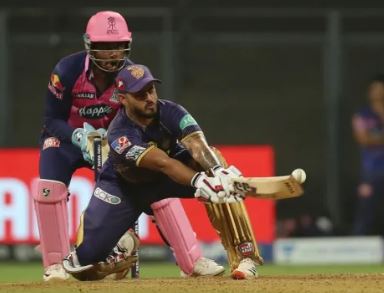Daniel Vettori and Imran Tahir have called for wides and height no-balls to be available for reviews even if they haven’t resulted in a dismissal. Vettori originally made the statement on the show Mute Me last week, and repeated it on the T20 Time:Out post-game show on Monday night, after the 19th over of Kolkata Knight Riders’ chase left Rajasthan Royals captain Sanju Samson frustrated with umpire Nitin Pandit for calling three wides when he contended that the batter had moved around in the crease even before the bowler Prasidh Krishna had released the ball.
At one point, Samson went ahead and reviewed a wide for a catch, possibly as a mark of a protest. “I don’t think there was any thought of it actually being out,” Vettori said. “Absolutely [players should be allowed to review wides]. The players should be able to decide in such crucial matters.
“Today it is a little bit different where it always looked like KKR are going to win. But we have sat here so many times and seen decisions go against bowlers that are so close and the umpire has got it wrong. So therefore the players should have some avenues towards rectifying those mistakes. That’s why DRS was brought in: to rectify mistakes. I would like to see that happen. And players are very good judges of that. They get it right more often than not.”
Vettori has coached in the IPL and continues to coach in the Big Bash League. Tahir, who is still active as a player, agreed with Vettori. “Yeah why not?” Tahir said when asked if the players should be allowed to review what are essentially judgement calls. “There is not much for bowlers in the game. When batsmen are hitting you all over, you don’t have much choice than bowling wide yorkers or bowling wide legbreaks. If that becomes a wide, you are in trouble.
“But look, it was a close call. Samson was a little bit frustrated. It was a 50-50 thing. I don’t think it should be a big issue. Kolkata played well, and they were going to win it. But yeah there should be a review that a player can go for.”
Royals coach Kumar Sangakkara conceded that the wide calls were not that crucial but called for consistency in those calls. “I think consistency is the most important thing in terms of calling wides,” Sangakkara said in his post-match press conference. “I think there are some new rules. You can’t create a wide but you can destroy a wide by moving around the crease. Before the delivery is made, any movement you make becomes the starting point for the wide line to start moving.
“It is what it is at the end of the day but at the same time we have got to realise we didn’t play good enough cricket in the last two games to be on the winning side. But sometimes these one-percenters do count. In a high-pressure situation, when things go your way or don’t go your way, tempers can get frayed, and agitation comes about but it’s all in good spirit. We have got to get better as a side.”
The debate remains if there should be two extra reviews available to each side, which will slow the game down, or if players should be allowed to review any decision they want provided they stay within their original two-review limit. Also there is an element of expert judgement involved in wide calls as the line is just a guide and moves if the batter moves laterally before the ball is released. Vettori is of the view that the on-field umpire could be fed all the information – how far the batter had moved at the time of the release of the ball, how wide the ball was when it went past the wicket etc – and then be allowed to make a more informed decision in the case of a challenge.
